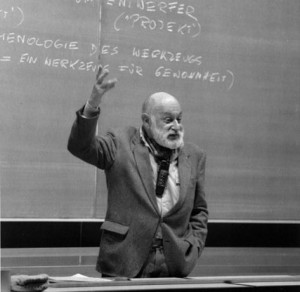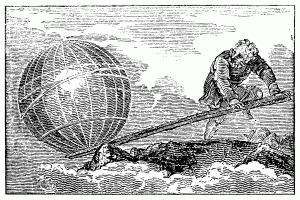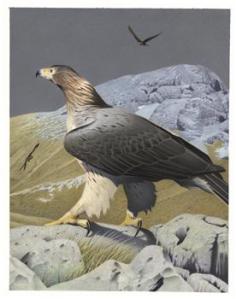Ghérasim Luca (1913-94) was a member of the Romanian Surrealist Group (1940-47), which stood for “a reinvention of the surrealist imagination” through “a critical approach to dreams, the eroticisation of the proletariat, the poetic appropriation of quantum physics, and the perpetual re-evaluation of surrealism through the negation of negation” (The Passive Vampire, with an Introduction on the Objectively Offered Object, a Found Portrait and Seventeen Illustrations, ed. and intro. Krzysztof Fijalkowski [Bucharest: Les Éditions de l’Oubli, 1945; Librarie José Corti, 2001; Prague: Twisted Spoon, 2008]; see Twisted Spoon and Salonica).

———
We know that the Surrealists loved objets d’art of various species:
- “old-fashioned manufactured objects,” i.e., “found object[s],”
- “natural object[s],”
- “striking arrangement[s],”
- “machine[s],” and
- “being-objects.”
(Richard Coyne, Technoromanticism: Digital Narrative, Holism, and the Romance of the Real [Boston, MA: MIT Press, 2001] 192, citing Sarane Alexandrian, Surrealist Art, trans. Gordon Clough [London: Thames & Hudson, 1970] 141)
For Luca and his co-conspirator Dolfi Trost, creating such objects allows us to move beyond traditional, i.e. plastic (3D) and subjective, art practice by the use of “rigorously applied scientific procedures”:
We have returned to the problem of knowledge through images . . . by establishing a clear distinction between images produced by artistic means and images resulting from rigorously applied scientific procedures, such as the operation of chance or of automatism. We stand opposed to the tendency to reproduce, through symbols, certain valid theoretical contents by the use of pictorial techniques, and believe that the unknown that surrounds us can find a staggering materialization of the highest order in indecipherable images. In generally accepting until now pictorial reproductive means, surrealist painting will find that the way to its blossoming lies in the absurd use of aplastic, objective and entirely non-artistic procedures. (“Dialectique de la Dialectique“)
(How absurd, i.e., aleatory, non-intentional and meaningless, the objects were is debatable—especially because, as we’ll see below, they were “offered” to a particular person.)
And they represent a response to the outworn nature of modernity, embodied in his motto: “Everything must be reinvented, nothing exists anymore in the whole world” (quoted in Inventor of Love & Other Writings, trans. Julian and Laura Semilian [Black Widow; Commonwealth Books, 2009]; see Ghérasim Luca: Reinvent Everything).
Hence Luca invented—or rather, reinvented, or better, redesigned—the “objectively offered object” or OOO (sometimes shortened to “offered object” or OO) as an objet d’art offered in a particular spirit. The OOO was made while thinking of the person for whom it was intended—like a kind of fetish (an object to which is attributed inherent value or power); thus it served as a vehicle for sentimental or intellectual exchange and became a qualitative description that could be interpreted like a rebus. They were usually assemblages or composites of found and chosen elements that aimed to reveal the hidden relationships between subjects and reveal the workings of an “active collective consciousness” by describing, revealing, invoking a desire, eros being what we might call the “circulatory” principle of society.

An object focusses the movement of desire:
When offering an object to someone, external causality responds more rapidly to internal necessities. Erotic relations between myself and other individuals are more quickly established though the mediation of the object.
A found or made object becomes offered (an OOO) on the slightest pretext, i.e. one of little interpretative value:
For a found or made object to be transformed into an offered object, and for it to be able to change its nature in line with the new relationships established in the interior life of the individual seeking a new balance between the internal and external, the pretext to this transformation must have an interpretive value that is, if not always negligible, at least very limited. The offering of an object might have as its setting the pretext of decoration, or a celebration, or some other external and circumstantial accident, just as the manifest life of a dream uses diurnal remnants and random internal and external stimuli to provide the sleeper a framework of no interpretational value within which the action of the dream can unfold.
Note that the OOO is not a gift—because gifts aren’t erotic:
In today’s society, the offered object bears no qualitative relation to the gift. The gift is an object that is bestowed only after having been stripped of its objective erotic character. Its emotive force is neutralised by its standardisations, which has allowed the bourgeoisie to thwart the differentiation of individual tendencies and thus offer one more argument in support of contemporary morality, which is presented as the only all-encompassing morality possible.
———

“The Letter L,” The Passive Vampire 39.
The Letter L embodies Luca’s desire to form a rapport with André Breton. As he puts it,
The doll found in the shop window and the envelope full of riddles in the drawer only imposed their presence, violently, into my life at the moment when the desire to know B. [Breton] located in them the overt substitute means for doing this. The incubus found its full realisation through the use of these two magic objects in which I was also shortly to discern sorcery’s demonic power. (44-45)
It is constructed from an antique wooden doll, with hundreds of pictorial riddles from an almanac randomly pasted over its torso and right leg, and with another doll’s head attached upside down to its pelvis. Razor blades are inserted into the head of the second doll’s head, one sliced into its eye (see Mute).
———
This is the first sentence of The Passive Vampire, which embodies Luca’s fetish for objectivity (though it couldn’t be described as non-subjective):
Objects, these mysterious suits of armour beneath which desire awaits us, nocturnal and laid bare, these snares made of velvet, of bronze, of gossamer that we throw at ourselves with each step we take; hunter and prey in the shadows of forests, at once forest, poacher, and woodcutter, that woodcutter killed at the foot of a tree and covered with his own beard smelling of incense, well-being, and of the that’s-not-possible; free at last, alone at last with ourselves and with everyone else, advancing in the darkness with feline eyes, with jackals’ teeth, with hair in lyrical, tousled ringlets, beneath a shirt of veins and arteries through which the blood flows for the first time, we’re lit up inside ourselves by the giant spotlights of the very first gesture, saying what must be said, doing what must be done, led among the lianas, butterflies, and bats, like the black and white on a chessboard; no one would dream of forbidding the black squares and the bishop—the ants vanish, the king and queen vanish, the alarm clocks vanish in turn, we reintroduce the walking stick, the bicycle with odd wheels, the timepiece, the airship, keeping the siphon, the telephone receiver, the shower head, the lift, the syringe, the automatic mechanisms that deliver chocolate when numbered buttons are pressed; objects, this catalepsy, this steady spasm, this “stream one never steps in twice” and into which we plunge as into a photograph; objects, those philosopher’s stones that dis- cover, transform, hallucinate, communicate our screaming, those stone-screams that break the waves, through which the rainbow, living images, images of the image will pass, I dream of you because I dream of myself, hypnotically I aim at the diamond contained within you, before falling asleep, before you fall asleep, we pass through each other like two ghosts in a marble room whose walls are hung with life-sized portraits of our ancestors, with the portrait of a mediaeval knight next to the portrait of a chair gazing at the two fossils of ghosts on the walls of this spectral museum, and if it is true that we are shadows, then the people and the objects all around us here are nothing but the bones of shadows, the shadows of shadows. . . . (71-72)
Elsewhere, he puts it more directly:
In the world in which I like to breathe, a box can take on the same psychic content of a beloved woman; the delirious and fetishistic love between a man and a box thus casts a prophetic, thaumaturgic light onto the outer world. (81)
———
N.B. (1): Luca also invented cubomania, a “surautomatic” method of making collages in which a picture or image is cut into squares and the squares are then reassembled without regard for the image.

Cubomanie IV.
———
N.B. (2): Gilles Deleuze frequently cited Luca’s poetry as a prime example of stuttering in language, which for him represents the highest poetic function:
I believe that Ghérasim Luca is one of the greatest French poets, and of all time. He certainly does not owe this to his Romanian origin, but he makes use of this origin to make French stammer in itself, with itself, to carry the stammering into the language itself, not simply the speaking of it. Read or listen to the poem “Passionément,” which has been recorded as well as published in the collection Le Chant de la Carpe. One has never achieved such an intensity in the language, such an intensive use of language. A public recitation of poems by Ghérasim Luca is a marvellous and complete theatrical event. (“One Manifesto Less,” The Deleuze Reader, ed. Constantin V. Boundas [New York, NY: Columbia UP, 1993] 213)
In “Passionément” (1973), Luca literally stutters for several minutes (“Pas pas paspaspas pas / pasppas ppas pas paspas”) before he is able to utter the poem’s climactic final lines, which turn on the affirmation, “I love you passionately.” According to Deleuze, in this performance “[t]he entire language spins and varies in order to disengage a final sonic block, a single breath at the limit of the cry I LOVE YOU PASSIONATELY [Je t’aime passionnément]” (“He Stuttered,” Essays Critical and Clinical, trans. Michael A. Greco and Daniel W. Smith [Minneapolis, MN: UMP, 1997] 110 [partially viewable], quoted in Ronald Bogue, Deleuze on Literature [London; New York, NY: Routledge, 2003] 101).
Jared Wells at Begayer la Langue has a blog on recordings of Luca’s poetry; Ubuweb has several recordings.





















